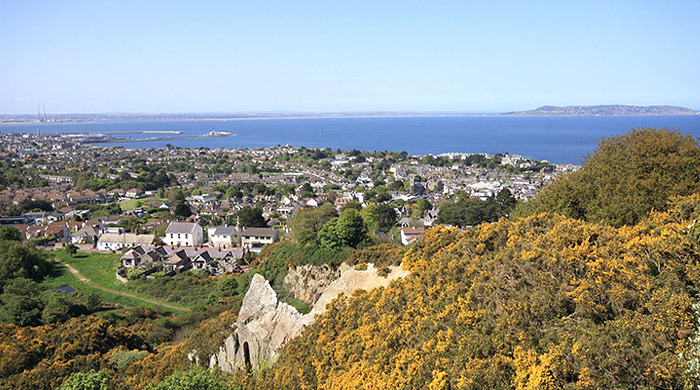Blacksburg/Hanover (dpa) – Sea levels are rising year after year and increasing the risk of flooding for coastal areas and their residents around the world. A study now shows that at the same time, large swaths of land along the East Coast of the United States are sinking — in some cases dramatically. Densely populated cities such as New York, Baltimore and Norfolk were also affected. There, land movement not only increases the risk of flooding, but also threatens sometimes crumbling infrastructure – buildings, pipelines, roads, railway lines and even large airport runways.
“The problem is not just that the Earth is sinking,” explains lead author Leonard Ohnen of Virginia Tech in Blacksburg. “The problem is that flooded land hotspots directly overlap with population centers and infrastructure.” Writing in PNAS Nexus, the geologist and his colleagues cite New York's major airports, JFK and LaGuardia, as examples, where the annual drop rate reaches more than two millimetres.
For the entire East Coast of the United States, the team assessed ground motions along a 100-kilometer-wide strip using radar measurements from satellites for the period 2007 to 2020. The results: Large parts of the region are sinking by more than 2 millimeters per year, and some – as much as 3,700 per square kilometer – by more than 5 millimeters, and in some places more than 10 millimeters. In New York, Baltimore and Norfolk, the rate is mostly between one and two millimeters per year. The main causes are subsoil pressure, groundwater extraction and mining.
Floods even below sea level rise
The decline, combined with rising sea levels — currently at about 4 millimeters per year — could triple the risk of flooding in some areas within a few decades, the group wrote. Even if there is no rise in sea levels, continued land subsidence in some coastal areas could lead to irreversible flooding and more regular flooding.
However, it is argued that the rate of subsidence is not necessarily a determining factor in damage to infrastructure. A problem is, for example, when adjacent areas sink at different speeds, leading to imbalance. What makes it more difficult is that the surface is rising in some areas of the East Coast, such as the Chesapeake Bay near Baltimore. This is considered a late result of glaciers that disappeared about 10,000 years ago.
Location in Germany
Some areas in Germany's coastal regions are also submerged significantly, explains Thomas Legge of the Federal Institute for Geosciences and Natural Resources in Hannover. Particularly affected are marshy areas – that is, areas with alluvial deposits, most of which are very wet and unconsolidated – for example in the estuaries of the Elbe and Weser rivers. BGR's head of risk analysis and remote sensing says there are larger declines of ten millimeters or more per year over gas fields roughly west of the mouth of the Ems River.
With subsidence, the risk of flooding increases, Legge says, especially if you consider longer timescales over several decades. The expert confirms: “But the relationship between sea level rise and soil subsidence is taken into account when building dams.” And when roads or industrial areas are built over swamps, planning is often done in advance: areas are sometimes covered with meters of sand years before construction actually begins – “in order to pre-compact the unpaved ground, to compact it a little like an underground sponge and anticipate future subsidence.” “
© dpa-infocom, dpa:240107-99-515811/3

“Alcohol buff. Troublemaker. Introvert. Student. Social media lover. Web ninja. Bacon fan. Reader.”







More Stories
Consciousness in animals: and they still feel
Question for information – What is the impact of climate change on migratory birds?
How is it treated and how can it be prevented?